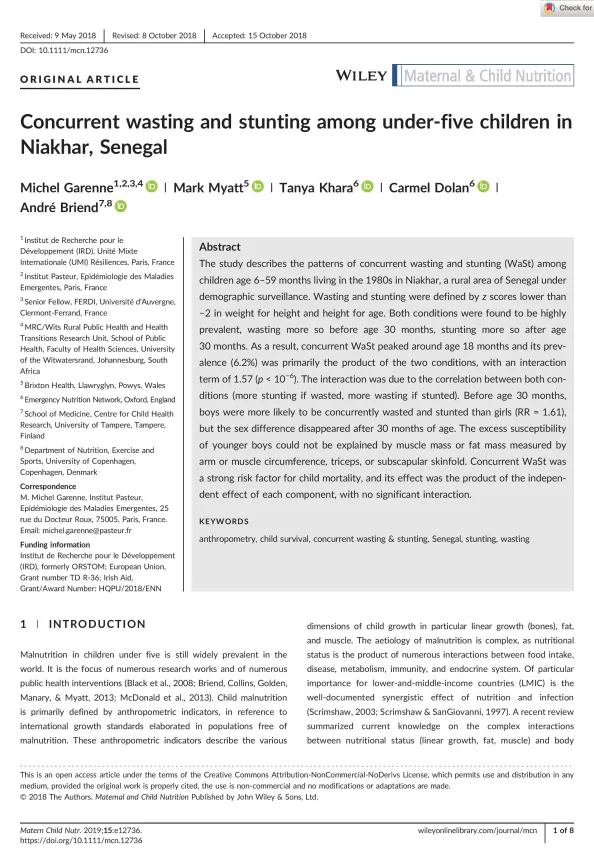Concurrent wasting and stunting among under-five children in Niakhar, Senegal
Publication details
Abstract
The study describes the patterns of concurrent wasting and stunting (WaSt) among children age 6-59 months living in the 1980s in Niakhar, a rural area of Senegal under demographic surveillance. Wasting and stunting were defined by z scores lower than -2 in weight for height and height for age. Both conditions were found to be highly prevalent, wasting more so before age 30 months, stunting more so after age 30 months. As a result, concurrent WaSt peaked around age 18 months and its prevalence (6.2%) was primarily the product of the two conditions, with an interaction term of 1.57 (p <10 -6). The interaction was due to the correlation between both conditions (more stunting if wasted, more wasting if stunted). Before age 30 months, boys were more likely to be concurrently wasted and stunted than girls (RR = 1.61), but the sex difference disappeared after 30 months of age. The excess susceptibility of younger boys could not be explained by muscle mass or fat mass measured by arm or muscle circumference, triceps, or subscapular skinfold. Concurrent WaSt was a strong risk factor for child mortality, and its effect was the product of the independent effect of each component, with no significant interaction.
Key messages
- Prevalence of concurrent wasting and stunting (WaSt) among under-five children is the product of independent wasting and stunting, plus an interaction term of 57%.
- Prevalence of WaSt peaks around age 18 months.
- Prevalence of WaSt is about 50% higher among boys than among girls before age 30 months, largely because their higher susceptibility to stunting but not higher thereafter.
- Excess mortality associated with WaSt is the product of that associated with wasting and that associated with stunting.

Cite this publication
Recommended Citation
Reference this page
Close
Garenne M, Myatt M, Khara T, Dolan C, Briend A. Concurrent wasting and stunting among under-five children in Niakhar, Senegal. Matern Child Nutr. 2019; 15:e12736. https://doi.org/10.1111/mcn.12736
Citation Tools
Download to a citation manager
Close
The below files can be imported into your preferred reference management tool, most tools will allow you to manually import the RIS file. Endnote may required a specific filter file to be used.